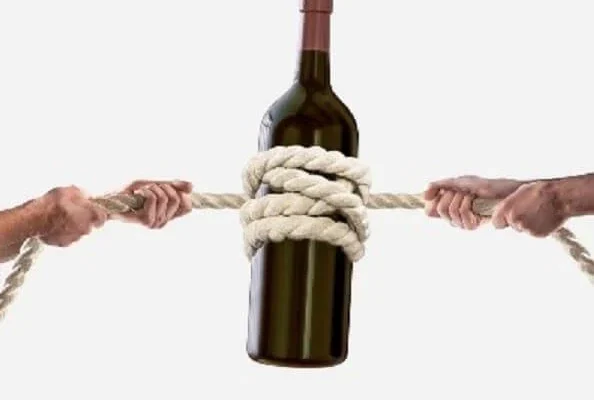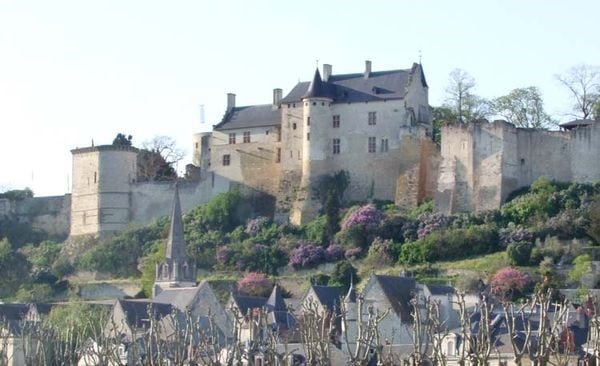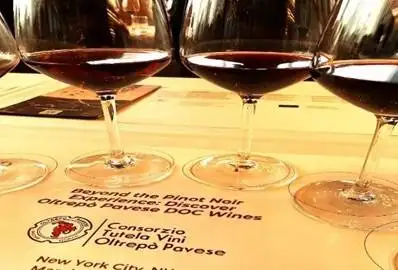The Difference(s)
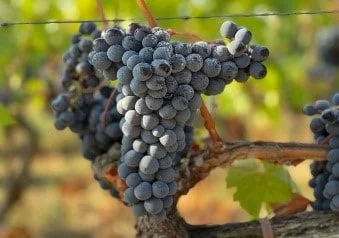
Whether your glass holds Chianti Classico or Chianti, the wines are made from Sangiovese grapes; however, the source of the grapes will vary.
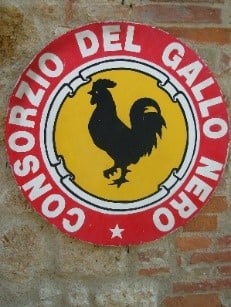
The black rooster (gallo nero) is the logo for Chianti Classico and harkens back to a legend about the use of roosters to settle a border dispute between the provinces of Sienna and Florence. The black cockerel was the symbol of Florence, and the white cockerel represented Sienna.
The Birth of Chianti
In the 13th century, Chianti was the financial capital of Europe. The Medici’s and Frescobaldi families devised the concept of banking and wealthy families controlled the monetary structure of half of Europe. With all the money headed to Tuscany, the nobility built grand and elegant villas, and enjoyed a lavish lifestyle.
At the time, the name Chianti was a geographical district and not a wine style. The Chianti Mountains included an area surrounding the towns of Castellina, Radda, and Gaiole, an area now known as the League of Chianti. The League was a political and military organization with the objective of protecting the Chianti territory on behalf of the Republic of Florence. The first wines produced in the locale were white.
In 1716, Chianti became the world’s first officially demarcated wine region as declared by Cosimo III, Grand Duke of Tuscany.
The edict defined the border of what is now known as Chianti Classico (Radda, Gaiole, Castellina, Greve and Panzano.). Baron Bettinio Ricasoli, the second Prime Minister of Italy, is credited with developing Chianti-style wines. In the late 19th century, after years of experimentation, he determined that Chianti would be a red blend dominated by Sangiovese (for bouquet and vigor), with the addition of Canaiolo to soften the palate experience. White Malvasia grapes were permitted for wines destinated for early consumption they were discouraged for cellaring. To guard the wines of Chianti the Chianti Classico Consortium (1924) was created with the objective of protecting, overseeing, and enhancing the value of the Chianti Classico denomination.

World War II stopped all viticulture. During the 1950s-60s the sharecropping system was abolished throughout Italy, and workers left the countryside for the big cities. Italian and European laws promoted a viticulture based on mass-production. Quantity was preferred over quality. High yielding clones were promoted.
Finally, in 1967 the Chianti DOC was created and the Ricasoli Formula inspired DOC regulations encouraging a focus on Sangiovese. Prior to Ricasoli’s work, Canaiolo was the lead grape in red chianti wines (it was easier to grow), frequently blended with other grapes including Sangiovese, Mammolo, and Marzemino. Chianti DOC rules de facto lowered the quality requirements of the wines and frustrated those producers interested in excellence.
Chianti Classico 2000
In 1989 Chianti Classico became the turning point for different Sangiovese based wine appellations in Tuscany. The project spanned 16 years and led to the mapping of 239 clones of Sangiovese. Over the years the Consortium focused on improving the image of Chianti Classico and in 1996 was officially recognized and Chianti Classico became an autonomous DOCG appellation.
Chianti Wine Types
• Standard Chianti. Minimum of 70 percent Sangiovese grapes; remaining 30 percent a blend of Merlot, Syrah, Cabernet or Canaiolo Nero, and Colorino; aged 3-6 months.
• Chianti Classico. At least 80 percent Sangiovese; remaining 20 percent (or less) a blend of other red grapes from Classico district; aged minimum of 10-12 months before released; carries gallo nero -black rooster seal.
• Chianti Classico DOCG grapes are grown from vineyards planted at higher elevations than Chianti DOCG. Look for taste adventures that include violets, and spice enhancing juicy cherry. Tannins and structure increase with quality showing fruit and terroir rather than oak. New oak, which brings baking spice and vanilla to wines, has for the most part, been deleted from the mix replaced by large oak casks lending greater transparency to the wines.
• According to law, Chianti Classico grapes can only be grown in the provinces of Florence and Sienna or designated townships. The wine can be made from at least 80 percent of red Sangiovese grapes – exclusively with a maximum of 20 percent of other red grapes including Colorino, Canaiolo Nero, Cabernet Sauvignon, and Merlot. White grapes were banned in 2006. In addition, the wine must be aged a minimum of 10 months before bottling, aged in oak barrels for at least 20-24 months, and deliver a minimum of 12 percent alcohol.
• Chianti Classico DOCG includes Nine Communes
Barberino Val d’Elsa
Castellina in Chianti
Castelnuovo Berardenga
Gaiole in Chianti
Greve in Chianti
Poggibonsi
Radda in Chianti
San Casciano Val di Pesa
Tavernelle Val di Pes
• Chianti Riserva. Longer aging process of 24-38 months allows tannins to mellow and adds greater complexity and structure.
• Chianti Superiore. Sangiovese grapes grown outside Classico district generally from lower yield vineyards; minimum of 9 months of aging.
• Gran Selezione. Created in 2014, features grapes from best estate vineyards; minimum of 30 months of aging before released; considered to be among the highest-quality Chiantis available.
Wine Classifications
• DOCG. Denomination Controlled and Guaranteed Origin
Highest level of restrictions from the way grapes are transported from the vineyard to the cellar, refinements, and bottling. Grapes and wine must be produced within the Area of Origin. Wines are checked through chemical and physical analysis and two expert tasting panels before being accepted.
• DOC. Denomination of Controlled Origin
Restrictions abound but regulations are less intense than DOCG as it was created to explore the common characteristics of an area slightly larger than a DOCG wine. Grapes and wine must be produced within the Area of Origin and subject to a single control with chemical and physical analysis and one tasting panel. Red and white wines are included in this category.
• IGT. Indicazione Geografica Tipica
A new classification where the wines are made in a larger production area with increased flexibility for the producer to be “unique.” IGT wines frequently linked to “new wave” organic, biodynamic and natural wines. Grapes and wine must be produced within the Area of Origin. Wines are analyzed but no tasting test is required as the flavor can differ from one bottle to another. Technically considered “less than” DOC; in reality, some of the best Italian wines can be found in this category. Red, white and rose wines are included in the IGT classification.
• VDT. Vino Da Tavola (Vino)
Basic wine category also known as Table Wine carrying no geographical indication and can include grapes grown anywhere in Italy. VDT wines tend not to be exported and considered of lesser quality.
Chianti Classico 2000
Chianti, located in the Tuscany region, had its boundaries expanded by the Italian government in 1932 as these locales had been producing chianti-style wines for many decades. In 1996 Chianti Classico DOCG became its own distinct denomination, leaving six subzones in Chianti DOCG. In 1967 a seventh subzone, Montespertoli was added. Now, a new eighth subzone has been introduced.
The Chianti Classico 2000 project was designed by the Consorzio in 1987 to modernize viticulture in the region and improve the quality of future wines.
It was approved by Ministry of Agriculture and Tuscan regional administration in 1988; endorsed and financed by EU.
The project included cooperation between agricultural schools at the University of Florence and University of Pisa and took 16 years to complete. It was divided into three phases:
1. On site testing and inspections
2. Data analysis
3. Publication of results
• 16 experimental vineyards were planted over a total area of 25 hectares (61.75 acres)
• 5 research cellars set up to vinify test batches of grapes from each vineyard
• 10 small meteorological stations were installed throughout the region to track micro and macro climate patterns
At the completion of the research, logistics project members agreed to:
1. Identify best clones to cultivate
2. Identify best methods of cultivation
3. Modernize and improve overall viticulture and wine production
4. Provide Chianti Classico producers with best methods and materials for production.
The Study
Modernizing grape varieties and winemaking in Chianti Classico region:
1. Grape varieties. Review of red grapes in use in Chianti Classico production; grapes included Sangiovese, Canalolo, Colorino, Malvasia Nera
2. Rootstock. Measure characteristics of selected rootstocks in use and considered best adapted to the soils and climate of Chianti Classico. Some rootstocks never used in region; study included experimentation with grafting techniques
3. Planting Density. Measure effect of planting density best suited to the region and production levels ranging from 3000-9000 plants per hectare: tracked: environment and yield; vine’s vegetative behavior, influence on grape, and wine quality. Outcome: density of 5000 plants per hectare displayed an optimum balance in terms of development and smaller yields.
4. Vine Training. Measure influence of foreign and traditional trellising systems on grape and wine quality; consideration to reducing high cost of manual pruning; results that the Espalier system at 60 centimeters displayed the most promising results.
5. Soil Management. Effects of controlled grass growing to limit soil erosion, and to improve overall vineyard management. Results: producers use grass as a cover crop on an on-going basis and avoid working soil on inclines when possible.
6. Clonal Selection Research. Focus on Chianti Classico varieties: Sangiovese, Canaiolo, Colorino. Results: identified 8 new clones suited to the Chianti Classico region; seven clones of Sangiovese and one Colorino. New clones displayed smaller berries, thicker skins, more open bunches; most consistency through climatic conditions; new clones entered into the Italian national registry of vine varieties as Chianti Classico 2000.
Outcomes: It is estimated that 60 percent of the Chianti Classico vineyards will be replanted to the new clones over next ten years if commercially available. It costs approximately 35,000 Euros to plant one hectare of new vines. New clones likely to make for easier cultivation as well as more consistent wines with softer balanced tannins. Expected that there will be a growing trend toward less use of international varieties, and a return to the traditional medium sized barrels as opposed to barriques.
Welcome to UGA. Need to Know
A group of 500 Chianti Classico producers recently voted to permit winemakers in 11 subdivisions to add UGA (Additional Geographic Units) to their Chianti Classico Gran Selezione wines (accounts for 6 percent of the region’s production) if they so choose. This new classification system aims to identify and distinguish the differences in climate and soil types in the region. The designations are not based on science however, but rather on a combination of physical and human factors
According to Chianti Classico consortium President, Giovanni Manetti, “The territory makes the difference,” and the Chianti Classico UGA identification gives consumers access to information about the place(s) of cultivation. Two-thirds of the area is covered by woodland with only one-tenth devoted to wine growing and more than 50 percent dedicated to organic farming. As of March 2021, there were 182 labels of Gran Selezione produced by 154 companies on the market. The UGA will impact approximately 6 percent of the total Classico production.
The blend for these wines increases the percentage of Sangiovese from 80 percent to a minimum of 90 percent and the use of native red grapes traditionally present in the Chianti area for the remaining 10 percent will be drawn from local varieties only (i.e., Colorino, Canaiolo, Ciliegiolo, Mammolo, Pugnitello, Malvasia Nera, Foglia Tonda). Cabernet, Merlot, and other vines will not be allowed in the GS blend and may signal a “full stop” to the so-called “international taste.”
The Event. Chianti Classico. UGA
I was recently introduced to the wines in the UGA designated zone at an event held in Manhattan. The event marked an official acknowledgement of the significant variations in the Tuscan region’s terroir. Sixty producers introduced their wine to more than 300 attendees including wine buyers/sellers, educators, and media.
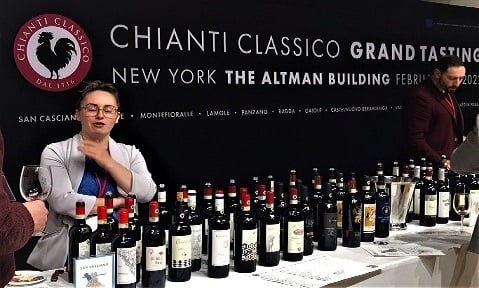



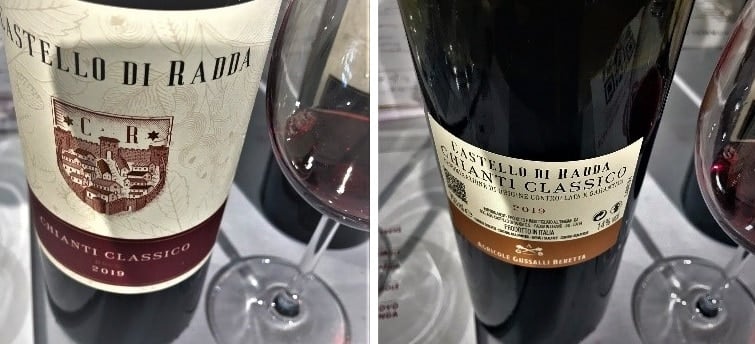
© Dr. Elinor Garely. This copyright article, including photos, may not be reproduced without written permission from the author.


